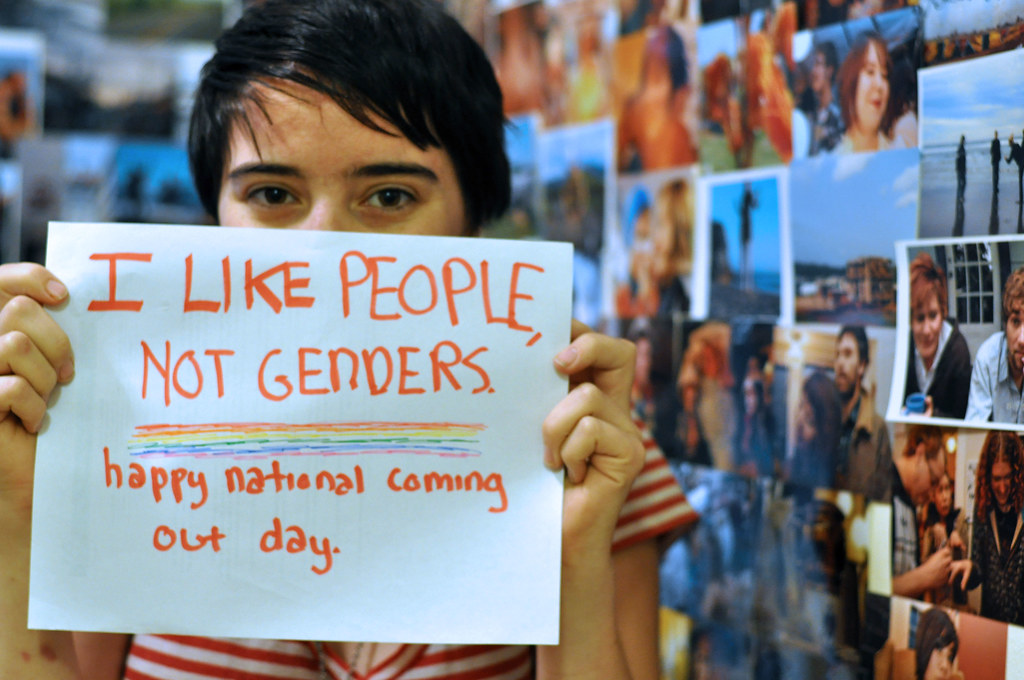Table of Contents
Pansexuality is a sexual orientation that describes people who are attracted to all genders. Pansexual people may be attracted to people of any gender identity, including cisgender, transgender, non-binary, and genderqueer people.
Pansexuality is often misunderstood as being the same as bisexuality. However, there are some key differences between the two sexual orientations. Bisexual people are attracted to two or more genders, but they may have a preference for one gender over another. Pansexual people, on the other hand, are attracted to all genders without any preference.
History of pansexuality
The term “pansexual” was first coined in the early 1970s by Fritz Klein, a psychologist who developed the Klein Sexual Orientation Grid. Klein defined pansexuality as “the capacity to be attracted to persons of all sexes and gender identities.”
Pansexuality gained more attention in the 1990s, as more people began to identify as pansexual. In recent years, pansexuality has become increasingly visible in the media and in popular culture.

Pansexuality vs. bisexuality
As mentioned above, pansexuality and bisexuality are often confused with each other. However, there are some key differences between the two sexual orientations.
- Attraction to all genders: Pansexual people are attracted to all genders, while bisexual people may have a preference for one gender over another.
- Not limited by gender: Pansexual people are not limited by gender in their attraction, while bisexual people may be more attracted to people of a certain gender.
- Attraction to the person, not the gender: Pansexual people are attracted to the person, not the gender. This means that they are attracted to someone’s personality, not their gender identity.
What does it mean to be pansexual?
Being pansexual means that you are attracted to all genders. This doesn’t mean that you are attracted to everyone, but it does mean that you are open to dating and having relationships with people of all genders.
Pansexual people often feel a strong sense of connection with people of all genders. They may feel like they can see the person beyond their gender and connect with them on a deeper level.

Pansexual experiences
Coming out as pansexual can be a challenging experience. Many pansexual people face discrimination and prejudice from others. They may be told that they are “confused” or “making it up.”
Pansexual people also face challenges in dating. They may have difficulty finding partners who are open to dating someone who is pansexual. They may also face discrimination from potential partners’ families and friends.
Despite the challenges, many pansexual people are happy and fulfilled in their lives. They have found partners who love and accept them for who they are. They also have strong communities of pansexual friends and allies.
FAQs about pansexuality
- What is the difference between pansexual and omnisexual?
Pansexual and omnisexual are two sexual orientations that are often confused with each other. However, there is a key difference between the two. Pansexual people are attracted to all genders without any preference, while omnisexual people are attracted to all genders with a preference.
- Can a pansexual person be in a monogamous relationship?
Yes, a pansexual person can be in a monogamous relationship. Pansexuality is about who you are attracted to, not how many people you are attracted to. A pansexual person can be just as happy in a monogamous relationship as anyone else.
- What is the flag for pansexuality?
The pansexual flag was created in 2010 by artist and activist Jasper. The flag consists of five horizontal stripes: pink, yellow, cyan, blue, and purple. The pink stripe represents attraction to females, the yellow stripe represents attraction to males, the cyan stripe represents attraction to non-binary people, the blue stripe represents attraction to transgender
- What is the difference between pansexual and gender-blind?
Pansexual and gender-blind are two terms that are sometimes used interchangeably, but there is a subtle difference between them. Pansexual people are attracted to all genders, while gender-blind people are not aware of or do not care about gender in their attraction.
- Can a pansexual person be attracted to someone who is asexual?
Yes, a pansexual person can be attracted to someone who is asexual. Asexuality is a lack of sexual attraction, not a lack of romantic attraction. A pansexual person can be attracted to someone’s personality and other qualities, even if they are not sexually attracted to them.
- What is the difference between pansexuality and polyamory?
Pansexuality is a sexual orientation, while polyamory is a relationship style. Pansexual people are attracted to all genders, while polyamorous people are open to having multiple romantic partners.
Conclusion
Pansexuality is a beautiful and valid sexual orientation. Pansexual people are attracted to all genders and have the same capacity for love and happiness as anyone else. If you are pansexual, know that you are not alone and that there are many resources available to help you.
The Future of Pansexuality
Pansexuality is a relatively new sexual orientation, and it is still evolving. As more people become aware of pansexuality, it is likely that the definition and understanding of pansexuality will continue to change.
It is also possible that pansexuality will become more accepted and visible in society in the future. As more people come out as pansexual, it will help to break down stereotypes and misconceptions about pansexuality.
Overall, the future of pansexuality looks bright. Pansexual people are becoming more visible and accepted in society, and the definition and understanding of pansexuality is evolving. This is a positive development for pansexual people and for the LGBTQ+ community as a whole.
If you are pansexual, or if you are supporting a pansexual friend or loved one, there are many things you can do to help raise awareness of pansexuality and to promote acceptance of pansexual people.
By taking these steps, you can help to create a more accepting world for pansexual people.
- Educate yourself and others about pansexuality. There are many resources available online and in libraries that can help you learn more about pansexuality. You can also talk to pansexual people about their experiences.
- Use inclusive language. When talking about gender and sexuality, be sure to use inclusive language that includes pansexual people. For example, instead of saying “men and women,” you could say “people of all genders.”
- Support pansexual organizations and events. There are many organizations and events that support pansexual people. You can donate to these organizations or attend their events to show your support.
- Speak out against discrimination against pansexual people. If you see or hear someone making a discriminatory remark about pansexual people, speak up. Let them know that their words are hurtful and that pansexual people are just as deserving of respect as anyone else.
I do not even know how I ended up here but I thought this post was great I dont know who you are but definitely youre going to a famous blogger if you arent already Cheers.
Ahaa, its good dialogue concerning this post at this place
at this web site, I have read all that, so at this time me also commenting here.